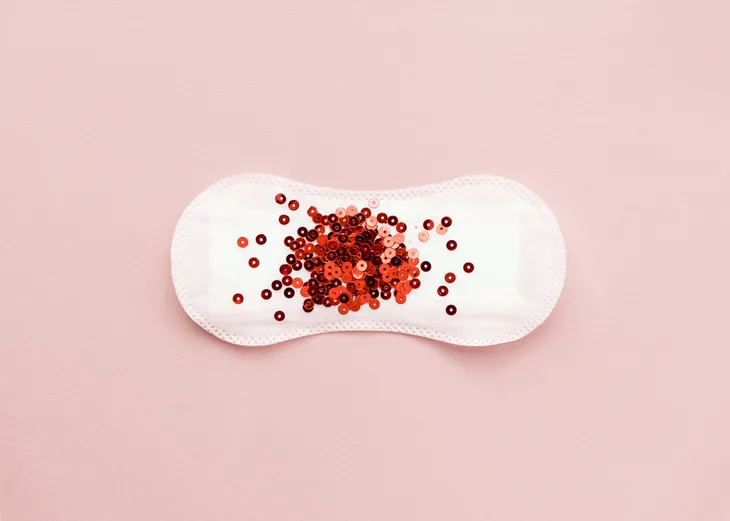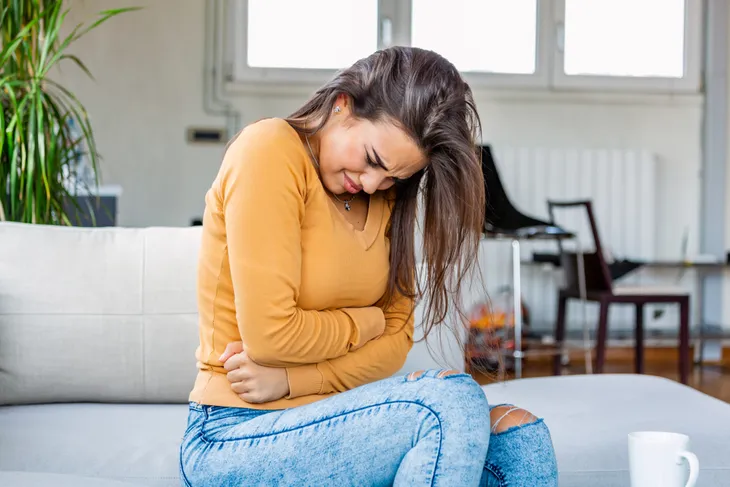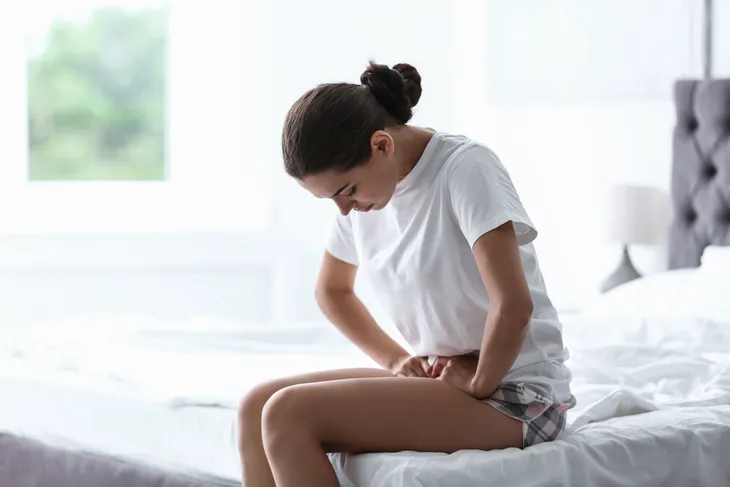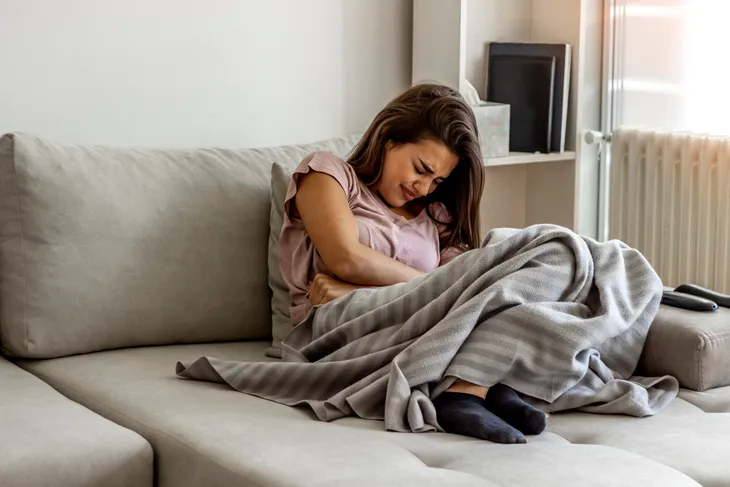- Premenstrual dysphoric disorder (PMDD) is a health condition that affects women of childbearing age each month shortly before they begin menstruation.
- Symptoms of PMDD mimic those of PMS but are more severe and long-lasting.
- A combination of medications, lifestyle changes, and other medical therapies may be used to treat or manage PMDD.
- The outlook for someone with PMDD is generally the same as someone without it, although the pain can make daily life challenging while it persists.
When a woman starts her menstrual cycle each month, it isn’t uncommon to experience various unpleasant side effects. In fact, many women regularly battle mood swings, headaches, fatigue, lower back pain, and breast tenderness among other symptoms. However, some women have more severe symptoms during their time of the month than other women.
When these symptoms are extreme (or even debilitating), a woman may be diagnosed with premenstrual dysphoric disorder (PMDD). Here’s a look at what you need to know about PMDD, including the common signs, causes, and treatment options.
What Is PMDD?
PMDD, is a health condition that affects some women. Like the more common PMS, PMDD symptoms generally only appear shortly before a woman begins menstruation and last up to a few days after the bleeding stops. In most cases, PMDD symptoms disappear on the second or third day of menstruation.
Once a woman starts menopause, the symptoms of PMDD usually disappear. Unfortunately, while symptoms exist, they can be so severe that those affected find it difficult to carry out their everyday routines.
Are PMDD and PMS the Same Thing?
Although the two conditions are similar, PMDD and PMS aren’t the same things. Premenstrual syndrome, or PMS, causes symptoms 1- to 2-weeks before the start of menstruation, and around 90-percent of women say they get it.
PMDD is a more severe form of PMS that lasts longer and has more debilitating symptoms. For example, a woman with PMS may have mild to moderate cramping for a few days after ovulation, but a woman with PMDD may have moderate to severe cramping that lasts as long as a week or more.
Who Gets PMDD?
While PMS affects up to 90-percent of women, PMDD is significantly less common. It’s estimated up to 5-percent of women of childbearing age have PMDD, although this number could be skewed because some women don’t seek treatment for what they believe to be PMS.
Interestingly, a significant number of women who have PMDD also have anxiety or depression. Although some experts suggest there may be a connection between the two, this hasn’t yet been proven.
What Are the Physical Symptoms of PMDD?
The primary physical symptom of PMDD is severe cramping in the lower abdomen that may be intermittent or constant. This pain may also extend to the lower back. Fatigue and nausea are also common.
In addition, some women may experience vomiting, similar to the “morning sickness” of pregnancy, and diarrhea, especially in the first few days of symptoms. Additional physical symptoms might include headaches, breast tenderness, bloating, and muscle or joint pain. These symptoms present without another cause and usually happen alongside emotional symptoms.
What Are the Emotional Symptoms of PMDD?
Many women feel anxious or depressed around the onset of PMDD. In women with an existing anxiety disorder or depression, symptoms may worsen. Mood swings are also common as are feelings of irritability, anger, sadness, or despair.
Panic attacks and weeping are also common. Some women may experience thoughts of self-harm. Anyone who thinks they may hurt themselves should call the Crisis Lifeline by dialing 988 to speak with a trained crisis counselor. You can also call 9-1-1 to get emergency assistance.
What Can Cause PMDD?
The cause is unknown in most cases of PMDD. As with most conditions, there may be some genetic factor. This means that if your mother or grandmother suffered from PMDD, you might be more likely to develop the condition. However, most people believe hormonal fluctuations and serotonin levels are the most likely culprits.
Serotonin is a brain chemical that plays a role in libido, hunger, regulating body temperature, sleep, and mood. When serotonin levels are too low, it’s possible to develop anxiety or depression.
Is There Any Way to Prevent PMDD?
Although there isn’t any proven method to entirely prevent PMDD, you can take some steps to reduce your ongoing symptoms. Making healthy lifestyle changes might help reduce the severity and duration of PMDD symptoms, especially when combined with doctor-prescribed medications or therapies. For example, some women report reduced symptoms with a regular exercise routine.
Limiting caffeine, staying hydrated, stopping smoking, and avoiding alcohol may also be beneficial. In addition, yoga, meditation, mindfulness, and therapeutic journaling may help ease the mental symptoms of PMDD.
How Is PMDD Diagnosed?
To be diagnosed with PMDD, you must speak with your doctor about your symptoms and then keep a calendar of your symptoms for at least 2-months. However, the longer symptoms are tracked, the more definitive a diagnosis of PMDD.
A physical examination will be done, and the doctor may order blood work or abdominal imaging to rule out any other causes of the symptoms. To be diagnosed with PMDD, you must present with five or more related symptoms, including at least one mood-related disturbance.
What Conditions Mimic the Symptoms of PMDD?
A doctor often orders blood work and imaging (such as an ultrasound) of the abdomen when a woman presents with PMDD symptoms because they can mimic more serious conditions. For example, endometriosis can cause severe pain and irregular periods.
Fibroids (usually noncancerous) can cause heavy bleeding, cramping, and tenderness around the abdomen. Very rarely, cancer can cause symptoms similar to those of PMDD. Severe mood swings and irritability can also be caused by depression, anxiety disorder, or a mood disorder, such as bipolar disorder.
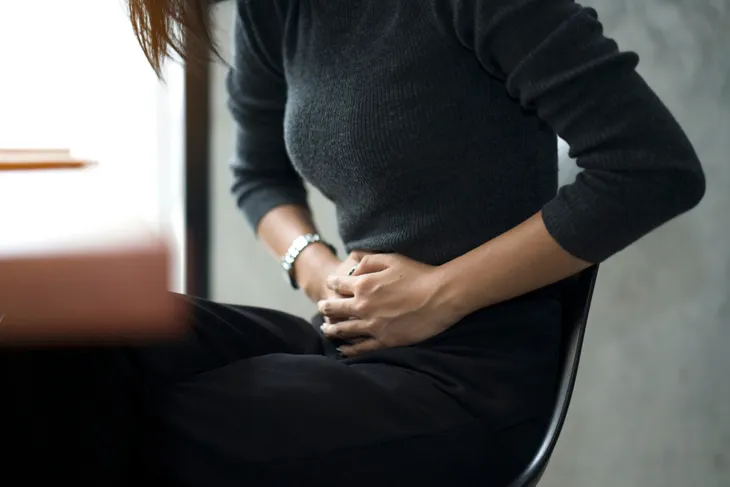 NaruFoto / Shutterstock
NaruFoto / ShutterstockWhat Can You Do to Ease PMDD Symptoms at Home?
If you’re experiencing the symptoms of PMDD at home and can’t get to a doctor, a few things may help you feel more comfortable. Over-the-counter pain relievers may help reduce physical symptoms. Meditation and gentle yoga may make the emotional symptoms more bearable. Rest is the best thing, if possible.
Staying hydrated and eating a balanced diet is also essential. Additional ways to reduce symptoms might include taking a warm bath, using a heating pad on your abdomen, and taking a leisurely walk in the fresh air.
What Treatments Might Your Doctor Prescribe for PMDD?
Antidepressants may be prescribed to treat PMDD, and there are several brands available so it’ll be up to your doctor to determine which one is best for you. Sometimes, a doctor might need to try different medications to see which one works, and the results may not be immediate.
Another option is birth control medication, which the FDA has approved to treat PMDD. Finally, a doctor may suggest over-the-counter pain relievers. If those don’t provide adequate pain relief, prescription-strength pain relievers might be prescribed. It’s always important to follow the guidance of your doctor, especially when it comes to medication.
What’s the Outlook for Someone With PMDD?
PMDD is a severe, chronic medical condition that requires ongoing treatment throughout a woman’s childbearing years. PMDD doesn’t generally affect a person’s expected lifespan like other diseases, but the symptoms can cause significant distress, disrupting a person’s life and affecting their overall quality of life.
In rare instances, PMDD can cause severe depression. If your symptoms are interfering with your daily life, be sure to contact your doctor right away.


